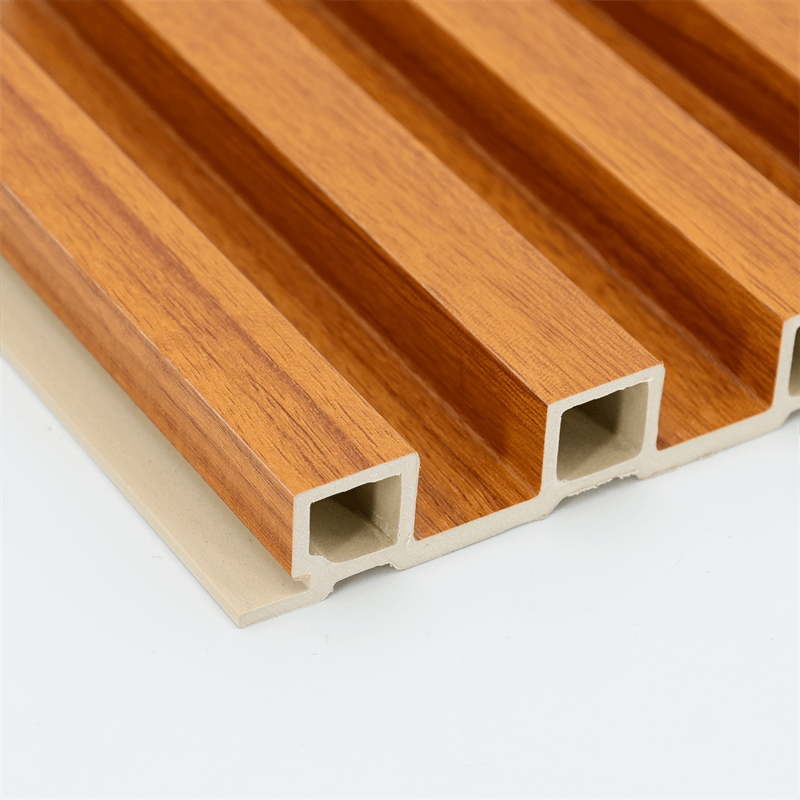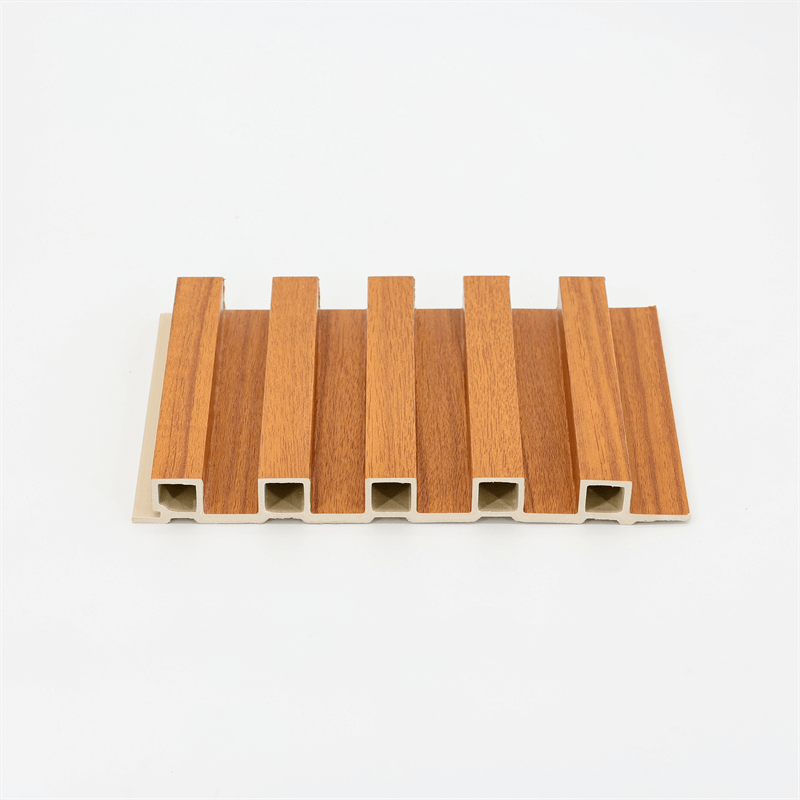
Wood Plastic Composite (WPC) fluted panels have gained popularity as a sustainable and versatile building material,
well-known for their exceptional weather resistance and durability.
While these properties make them an ideal choice for outdoor applications, their advantages extend to indoor spaces as well.
In this article, we will explore how WPC fluted panels excel in indoor applications, providing a comparative analysis of their performance against traditional materials.
From moisture resistance to long-lasting aesthetics, WPC fluted panels prove to be a smart and eco-friendly choice for enhancing interior spaces.
Moisture Resistance: A Game-Changer for Indoor Spaces
One of the standout features of WPC fluted panels is their remarkable moisture resistance.
This quality makes them a perfect fit for indoor spaces where humidity and moisture can be a constant challenge.
Here’s how WPC fluted panels outshine traditional materials in handling moisture:
WPC Fluted Panels: WPC fluted panels are engineered to repel moisture effectively.
The combination of wood fibers and plastic polymers creates a material that is inherently less prone to warping, swelling, and rotting when exposed to moisture.
This property is particularly crucial in areas like bathrooms, kitchens, and laundry rooms, where humidity levels are higher.
Traditional Materials: Solid wood, a common choice for interior applications, is vulnerable to moisture damage.
When exposed to high humidity levels, wood can expand, contract, and even develop mold and mildew.
In contrast, WPC fluted panels remain stable and intact, maintaining their original dimensions and appearance over time.
Verdict: WPC fluted panels provide superior moisture resistance compared to traditional wood, ensuring long-lasting performance and aesthetics in indoor spaces.

Scratch and Impact Resistance: Ideal for High-Traffic Areas
Indoor spaces, especially those with high foot traffic, demand materials that can withstand daily wear and tear.
WPC fluted panels excel in this aspect, offering impressive scratch and impact resistance:
WPC Fluted Panels: The combination of wood fibers and plastic polymers imparts strength and resilience to WPC fluted panels.
This unique composition makes them highly resistant to scratches, dents, and impacts that are common in busy indoor areas.
Traditional Materials: Solid wood panels can be more susceptible to scratching, and their surfaces may require regular maintenance to retain their appearance.
In contrast, WPC fluted panels maintain their smooth and blemish-free finish even after continuous use.
Verdict: WPC fluted panels are an excellent choice for high-traffic indoor areas, ensuring they retain their visual appeal and structural integrity under demanding conditions.
UV Stability: Preserving Aesthetics in Sunlit Spaces
While indoor spaces may not be directly exposed to sunlight, certain areas may receive ample natural light, such as sunrooms or conservatories.
In such cases, UV stability becomes a crucial factor in maintaining the aesthetics of the materials used:
WPC Fluted Panels: WPC fluted panels exhibit excellent UV stability due to the plastic content in their composition.
They resist fading, discoloration, and degradation caused by exposure to sunlight, ensuring that their appearance remains vibrant and consistent.
Traditional Materials: Traditional materials like wood and certain plastics may experience discoloration or fading when exposed to direct sunlight for prolonged periods.
Over time, this can lead to an uneven and less appealing appearance.
Verdict: WPC fluted panels’ UV stability ensures that they maintain their beauty even in sunlit spaces,
making them suitable for various indoor applications where natural light is abundant.

Low Maintenance and Long-Lasting Aesthetics
Indoor spaces often benefit from materials that require minimal maintenance without compromising on aesthetics.
Here’s how WPC fluted panels score in this regard:
WPC Fluted Panels: WPC fluted panels are low-maintenance, requiring only regular cleaning with mild soap and water to retain their appearance.
They do not need staining, sealing, or refinishing, saving both time and money in the long run.
Traditional Materials: Solid wood panels may demand periodic maintenance,
such as sanding, staining, or varnishing, to preserve their look and protect them from wear.
This upkeep can be time-consuming and may incur additional costs over time.
Verdict: WPC fluted panels offer a hassle-free and cost-effective solution for indoor applications,
providing long-lasting aesthetics without the need for extensive maintenance.
WPC fluted panels prove to be a top-notch choice for indoor applications,
thanks to their exceptional moisture resistance, scratch and impact resistance, UV stability, and low maintenance requirements.
As we’ve seen in the comparative analysis, WPC fluted panels outperform traditional materials like solid wood in various key aspects.
For architects, designers, and homeowners seeking a durable, eco-friendly, and aesthetically pleasing material for enhancing indoor spaces,
WPC fluted panels stand out as the ideal choice, combining functionality with a sustainable and visually appealing solution.
